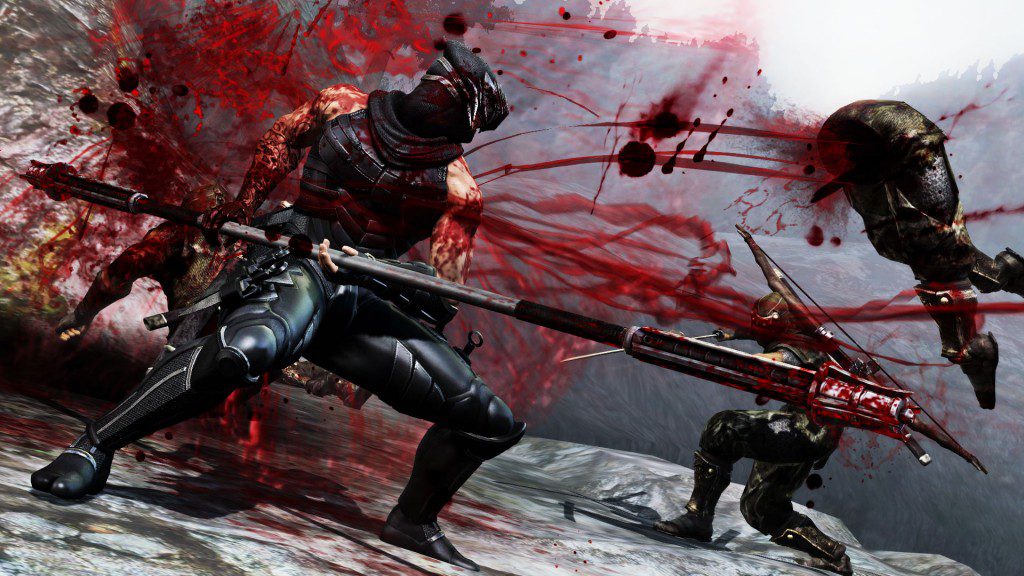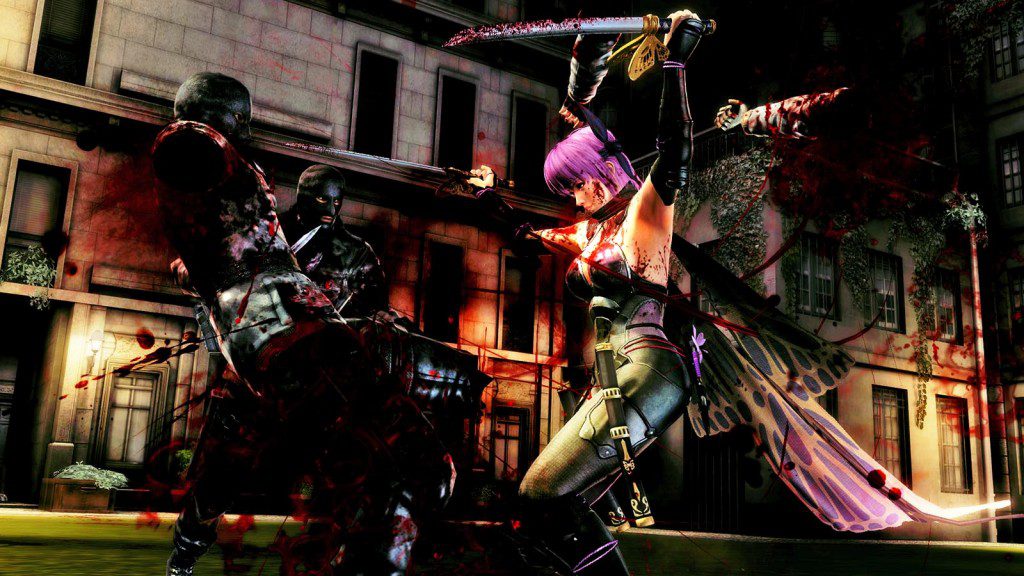When I look at Ninja Gaiden over the last few years, I can’t help but think about how the mighty have fallen. When Ninja Gaiden 3 was released at the end of last year, it met with rather scathing reviews, and for good reason. It was an atrocious game, especially considering the pedigree of the series. The controls were almost Resident Evil clunky, and the difficulty, which is what made Ninja Gaiden famous, was replaced by waves of easily reaped enemies, making combat more about button mashing instead of skill. Ninja Gaiden 3 Razor’s Edge is Team Ninja’s way of apology, which is a strange event, but a welcome one.
The plot and structure stay the same, which was a slight disappointment. Luckily, in the first iteration the story simply slowed down any momentum the action managed to build. By increasing the difficulty this time around, combat sections offer tension and satisfaction once you complete them. Once again, even the most common place enemies can knock the wind out of your sails, so there is a reason to keep focus, you can’t simply hit a button with one hand and text with the other one. Unfortunately, the excitement of conquering new enemies is often tempered by the ceaseless barrage of rocket fire from somewhere of screen, making many areas far more difficult and flat out frustrating as you try to concentrate on third-person shooting mechanics in a melee game. It is not a pretty combination.
Razor’s Edge sits you inside the world without the limitations on weapons and ninpo found in the first iteration, a welcome change. Now you have to purchase new moves and abilities as you progress, which would be fantastic for those addicted to that type of system if the layout for the skills menu wasn’t so oppressively convoluted. Moving across the grid may appear to change the areas of improvement, but somehow you always end up in the same grouping. There is no tutorial on it, and trying to understand how skill progress can be a headache early on and simply obnoxious later on. It serves to show how far Team Ninja tried to go in “fixing” the game, but how strangely ill-suited the changes are. Most notable of the changes that act as a double edge sword might be the addition of Ayane from Dead of Alive fame. Her sections offer a fresh experience, but it devolves into a T and A show far too often. It feels like the new chapters can’t decide on whether they are just fan service or actual new challenges for players. As with most of the game, great ideas set up loftier goals than can be met.
From a personal standpoint, I think Team Ninja deserves all the credit in the world for both Ninja Gaiden 3’s. Trying to change a well worn formula is not easy, and making the same game year after year is certainly the way most developers go these days. It is especially brave considering how rabid the fan base is, so good on them. When the first game was eviscerated by the press, it would have been easy for them to take their lumps and come back in a few years. Instead, they took the Wii U as a chance to make amends and craft the game their fans wanted for all the systems. Again, a bold move that they really did not have to make, and I give them all the credit in the world for trying it. Yet, the changes aren’t quite enough. It feels like they want to make something different, but have spent so long making the same types of games that adding in new mechanics simply stumped them. Razor’s Edge is certainly miles ahead of its predecessor, but not sixty dollars better. If fans of the series skipped the original release in November, well now it’s safe to go in. If you purchased it then and expect something brand new, wait for a significant discount.
Review Results
- Greatly improved challenges and combat abilities
- Better camera work
- Some of the most satisfying violence to witness
- Controls are still frustrating
- Difficulty spike kills momentum
- Same terrible story
- Not enough positive changes to justify a new game
Final Word:
AVERAGE
To see where this review score falls in our scoring range, please read our review scale guidelines.





